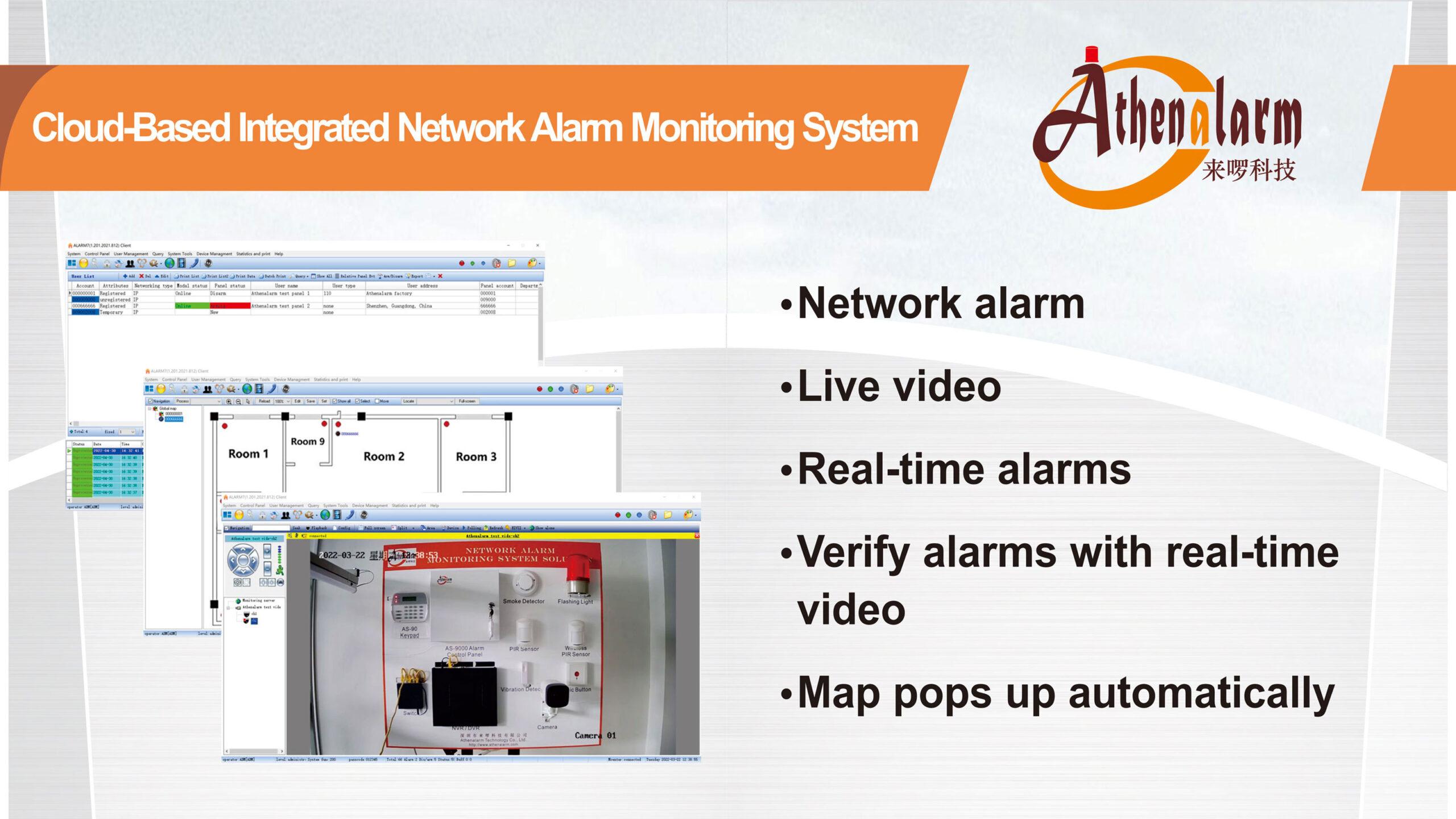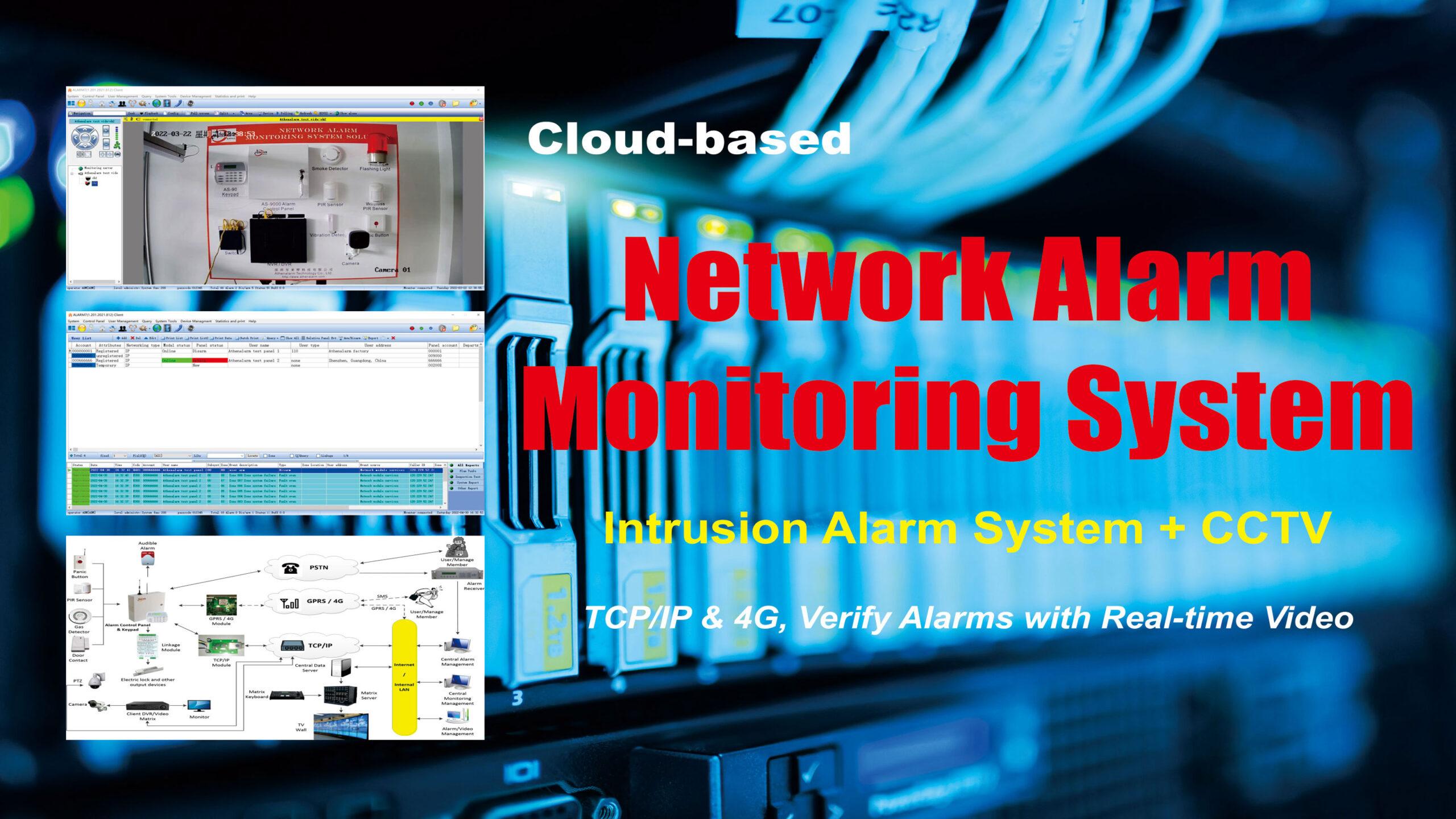



The Development Trend of the Security Alarm System
1 System intelligence
(1) Wireless forwarding alarm function for anti damage and anti cutting wires
In the market, except for GSM alarm control panels that do not require the use of landline, other alarm control panels need to use the city’s landline, which creates a hidden danger of security alarm system – what if the landline is cut off or the landline malfunctions? The wireless forwarding function of alarm control panels has emerged, solving the problem of normal operation of alarm control panels after landline is damaged.
Taking the wireless alarm control panel as an example, in the armed state, the alarm control panel is equipped with a wireless forwarding function. When the landline is cut off or there is a fault in the landline, the alarm control panel will immediately activate the wireless forwarding function, transmit the originally alarm phone number to another alarm control panel. And the other alarm control panel will immediately dial the phone on behalf of the other alarm control panel, achieving a self-service alarm function for disconnected lines, ensuring that security alarm system is foolproof.
(2) Automatic fault detection and anti false alarm function
The primary purpose for users to install security alarm systems is to prevent theft, but users will not encounter theft and other dangerous situations every day. Will the security alarm system function properly after a long period of absence of alarm? How can you clearly and concisely know if the security alarm system is working properly? This requires the security alarm system to have the function of automatic fault detection to prevent the occurrence of false alarms.
Fault self check is not a unilateral self check by the detector or alarm control panel, but a mutual detection between the detector and the alarm control panel. For example, if the detector in the security alarm system sends a normal code signal to the alarm control panel every 12 hours, and the alarm control panel can receive the detector’s normal code signal within 48 hours, it indicates that the detector is working properly. On the contrary, the alarm control panel will display a fault prompt, prompting users to check the security alarm system to ensure its safe and effective operation.
(3) Control functions of smart home appliances
Smart home systems utilize advanced technologies such as computers, network communication, and automatic control to organically integrate various application subsystems related to home life. Through comprehensive management, make family life more comfortable, safe, effective, and energy-efficient. It can transform a batch of previously passive stationary home devices into intelligent tools, optimize people’s lifestyles, help people effectively arrange time, enhance the safety of family life, and save energy costs for families. In recent years, smart home systems have begun to enter more and more households, but due to the fact that pure smart home products are still relatively expensive, many households are hesitant to use them. And security alarm systems with smart home functions have become a hot topic for users to choose from.
Some security alarm systems on the market now have practical home appliance control functions, such as automatically turning on and off lights, air conditioning, and other household appliances through infrared signals, achieving the combination of technology and art, intelligence and humanity. In addition to high-quality anti-theft, fire prevention, and gas prevention functions, security alarm systems can also achieve intelligent home appliance control functions, and have gradually become one of the elements for users to choose.
(4) Intelligent learning function
The biggest problem with perimeter systems is their susceptibility to outdoor environmental influences, which can lead to false alarms and missed alarms. Especially when storms occur, or when vehicles vibrate or airplanes take off and land, it often leads to false or missed alarms. Some perimeter systems have developed intelligent learning functions, which learn and memorize environmental states, so that when they are officially running, similar environmental states can be blocked, such as false alarms caused by obvious features such as wind, rain, and small animal activity, which can be automatically deleted, achieving optimal detection of true intrusion signals.
2 Regional networking
With the improvement of security awareness and the vigorous development of intelligent building construction, the average point capacity of security alarm systems is also rapidly increasing, and the number of alarm detectors has increased from a few or more to hundreds. The expansion of the prevention area, the complexity of construction wiring, and the later adjustment and expansion of detector distribution positions have all put forward new requirements for the control and management methods and system design architecture of security alarm systems.
The communication link in security alarm systems generally includes the networking between alarm detectors and alarm control panels, as well as the networking between alarm control panels and alarm monitoring centers. In the actual construction deployment process, in order to flexibly match the number and wiring of detectors, traditional switch signal transmission is still mostly used between alarm detectors and alarm control panels. The networking between alarm control panel and alarm monitoring centers is the key to whether the system is stable, robust, and flexible to expand.
The operation cost of landline networking method is high and the networking speed is slow. To solve the problem of multiple users simultaneously reporting line blockage, the alarm monitoring center needs to be equipped with multiple alarm control panels and multiple communication links. The dedicated bus networking method has low operating costs and fast networking speed, but has a small coverage area, poor reliability in line laying, and is prone to transmission interference.
The expansion of the prevention area has extended the monitoring range of the security alarm system. The alarm control panels distributed in various areas must have advanced communication network support, so that the security personnel in the alarm monitoring center can have a clear understanding of the alarm status of all detectors in the system at a glance. Traditional networking methods are difficult to sustain in the face of such changes, and Ethernet alarm technology makes it possible to achieve this requirement.
3 Linkage integration
The integration of multiple systems and platforms has become a major direction for the development of security systems, and security alarm systems are no exception. Among them, the strong market demand for video verification of alarm information makes it most necessary to achieve integrated linkage between security alarm systems and video surveillance systems.
If there is an alarm situation within the monitoring area, security personnel generally cannot appear quickly on site. If multiple alarm incidents occur at the same time, security personnel cannot go to multiple places at the same time. If the security alarm system can be linked to the video surveillance system, it can observe the real-time situation of the alarm scene in the alarm monitoring center, accurately identify and review whether there is intrusion or false alarm, automatically record the alarm time and location information, automatically capture and record videos, and notify relevant departments.
Most of the image information acquisition devices that have been built are video surveillance systems invested and constructed by social forces such as financial institutions, schools, shopping malls, hotels, enterprises, and residential communities. The installation and use of a large number of cameras that can be controlled by homeowners significantly reduces the difficulty of video verification. The various main control devices and platforms, such as matrices, DVRs, and third-party comprehensive security management software, have improved their functions in intelligent linkage processing and simplified the complexity of integrated management.
The main service customers of the alarm monitoring center are concentrated in key prevention units such as banks, museums, schools, etc. Ordinary users can only manage and use security alarm systems on their own, while the complex functional settings of professional alarm control panels such as instant alarms, delayed alarms, and 24-hour zones are difficult to fully grasp. By binding with the video surveillance system, the difficulty of using the system can be simplified, allowing users to combine intuitive and convenient image observation with alarm detection for daily security work.
The integration of multiple platforms and systems requires the transmission and sharing of underlying information data. The integration between traditional security alarm systems and other security subsystems is mostly achieved through hardware linkage, such as linkage with video surveillance system. Generally, hardware devices such as relay output modules are used to connect the alarm control panel to the alarm input port of video surveillance system equipment. When the alarm detector detects an abnormal situation, the alarm information is input to the main control equipment such as the matrix and DVR through this link. Video alarm linkage is performed through pre-set methods such as image switching, capturing, and recording. Due to the hardware information forwarding nature of the switch contacts, it is difficult or impossible to form true information exchange and transmission between systems.
Since hardware is difficult to achieve data distribution, software platforms have become a top priority in integrated systems. The advanced and complete security alarm system can not only display and record all video surveillance images in the vicinity of the alarm related area, but also link the access system to lock the relevant door area, automatically link to the electronic map, activate the perimeter strong current lighting system, and establish an alarm information database for convenient and fast retrieval and analysis.
In order to achieve perfect integration between security alarm systems and subsystems such as video surveillance system, access system, and intercom system, it is necessary to use alarm information as the standard data flow for triggering events, transmit and share real-time information between multiple systems, and establish an emergency oriented association mode between independent security subsystems.
4 IP based transmission
Digitization of alarm information can not only solve the problem of multi system and multi platform sharing of alarm information data, but also reduce false alarm interference during data transmission. False alarm refers to the alarm signal emitted by the security alarm system when no dangerous situation occurs. The reasons for false alarms include whether the alarm technology is advanced, whether the alarm detector is qualified, whether the system design is comprehensive, whether the construction process is reasonable, and whether the user uses it correctly. The environmental impact during the transmission of alarm information (such as the small distance between the alarm communication line and the power line, lighting line, etc., and the lack of anti electromagnetic interference measures) can be greatly reduced through IP processing.
At present, the data interfaces of most platform systems are still in the traditional RS-232/485/422 format. Data has shortcomings in real-time, accuracy, reliability, interactivity, and other aspects, while Ethernet communication technology is a relatively thorough technological innovation for serial communication. The advantages of Ethernet lie in not only unlimited transmission distance, high data transmission rate, and the use of standard communication protocols. The network has CRC verification and retransmission mechanisms at the bottom layer, and a reliable handshake protocol is added at the top layer of the protocol to ensure the reliability of data. When uploading and outputting data on the network, encrypted transmission is used for communication data. At the same time, identity recognition is performed on the sending end to isolate external interference and ensure the stability of communication. After encapsulating the alarm information with standard TCP/IP protocol, due to the specification of instructions, the integration and integration with video surveillance, fire protection, building control, access control and other platforms are more flexible and advanced. Network communication based on TCP/IP can also shorten the range of faults and quickly troubleshoot problem nodes through online detection.
The trend of IP technology has swept across various security subsystems, such as megapixel cameras, network video codecs, intelligent network matrices, network access control, intelligent video analysis, etc. The security alarm system also needs to adapt to the needs, transforming intrusion behavior obtained through photoelectric biological detection technology into digital information, and providing it to other subsystems for comprehensive processing.
